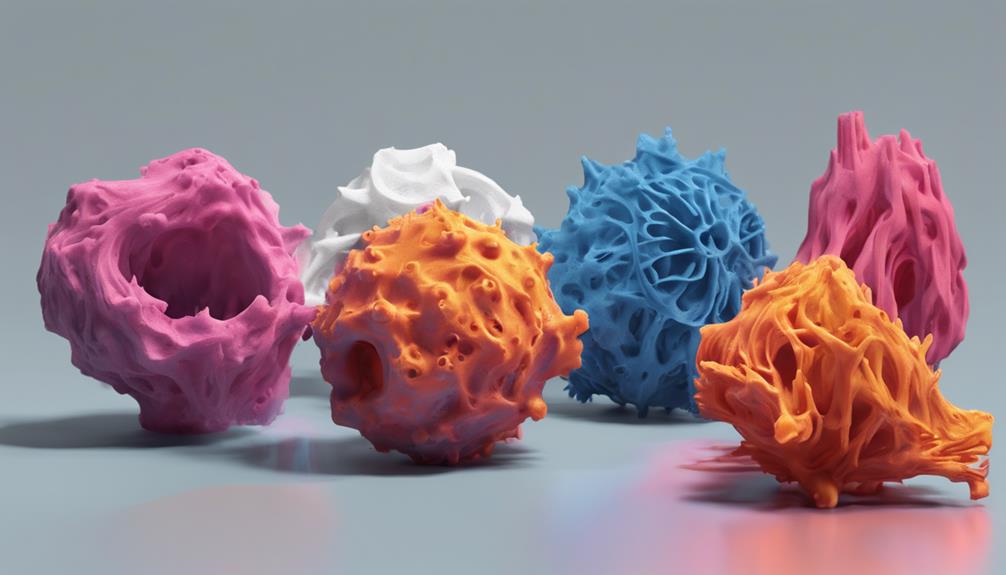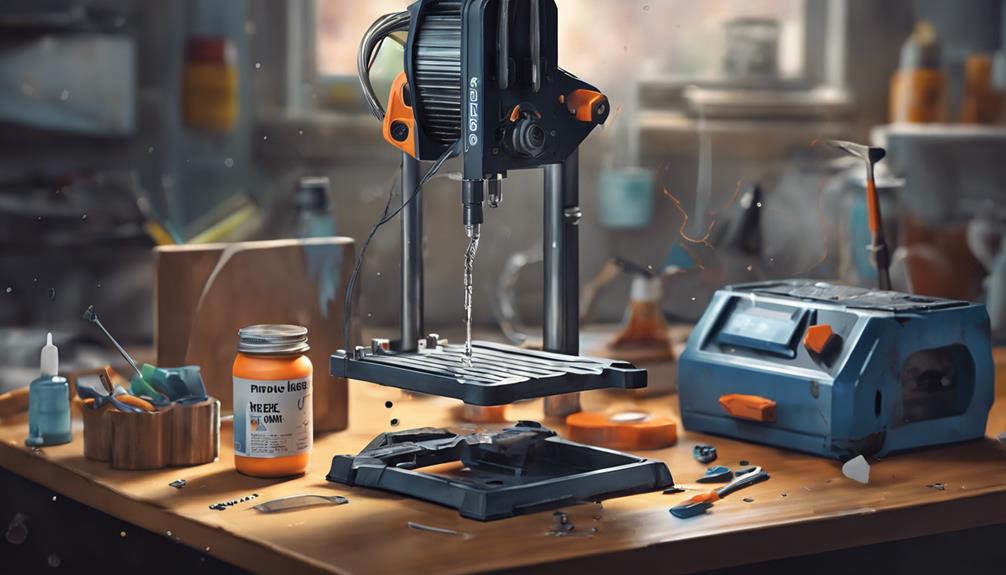When it comes to 3D printing, addressing nozzle leaks is like solving a maze of intricate challenges. Revealing the secrets behind these leaks can empower you to master the art of troubleshooting and fixing them efficiently. With a focus on essential tips and techniques, this exploration promises to equip you with the knowledge and skills needed to enhance your 3D printing journey. Discover how to unravel the mysteries of nozzle leaks and take your printing experience to the next level.
Common Causes of Nozzle Leaks

Discover the primary culprits behind nozzle leaks in 3D printing to effectively troubleshoot and resolve this common issue.
One major cause is incorrect assembly of the hotend components, leading to poor sealing and eventual leaks.
Inadequate maintenance, such as debris buildup or worn-out parts, can also contribute to leaks.
Additionally, using the wrong filament diameter or poor-quality filament can result in nozzle leaks.
Regularly cleaning and inspecting the hotend, ensuring proper assembly, and using high-quality filament can help prevent nozzle leaks.
Temperature and Retraction Optimization
To optimize your 3D printing results, focus on fine-tuning temperature and retraction settings for improved nozzle performance and print quality. Proper extruding temperature is essential in preventing nozzle leaks. Experiment with temperature ranges provided by material manufacturers to avoid blockages or oozing.
Adjust settings mid-print to achieve the best quality, considering factors like distance, speed, and travel distance for retraction to prevent oozing and stringing. Vary print opacity to find the ideal temperature for brightness balance. Use recommended baseline retraction values and faster travel speeds without extruding to minimize stringing.
Calibration tests are important for determining the most effective retraction settings, enhancing troubleshooting and overall print quality.
Impact of Extruding Temperature on Prints

How does the extruding temperature affect the quality of your 3D prints?
The extruding temperature plays a significant role in determining the outcome of your prints. If the temperature is too low, it can lead to blockages in the nozzle, causing poor print quality. On the other hand, if the temperature is too high, it can result in oozing and stringing, affecting the overall appearance of the print.
Finding the best temperature for your filament is essential to achieve high-quality prints. Experimenting with different temperature settings and conducting calibration tests will help you identify the perfect extruding temperature for your specific material, ensuring smooth and precise prints.
Troubleshooting Nozzle Leaks Effectively
For effective troubleshooting of nozzle leaks in 3D printing, it is crucial to understand key factors and implement precise adjustments.
Start by checking your extruding temperature; make sure it's within the ideal range provided by the material manufacturer. If the temperature is too low, it can cause blockages, while too high can lead to oozing. Experiment with different temperatures and run calibration tests to find the best setting.
Additionally, pay attention to retraction parameters like distance, speed, and travel distance to prevent oozing and stringing. Use tools like Temperature Towers and retraction tests to aid in troubleshooting.
Recommended Tools and Resources

Consider utilizing a curated selection of tools and resources to streamline your 3D printing experience. Look for products like specialized cleaning needles for unclogging nozzles, digital calipers for precise measurements, and thermal imaging cameras for monitoring temperature consistency.
Websites offering troubleshooting guides, forums for community support, and instructional videos can enhance your troubleshooting skills. Additionally, investing in high-quality filaments from reputable brands and upgrading to advanced nozzle designs can prevent nozzle leaks.
Follow Martin Mayer, a respected figure in the 3D printing community, for expert recommendations on printers, filaments, and upgrades. By leveraging these tools and resources, you can master the art of 3D printing and troubleshoot nozzle leaks effectively.
Frequently Asked Questions
How Can I Determine the Best Retraction Settings for My 3D Printer?
To determine the best retraction settings for your 3D printer, adjust temperature and retraction parameters during printing. Experiment with different settings to prevent oozing and stringing. Calibration tests are essential for optimizing quality.
What Are the Potential Risks of Setting the Extruding Temperature Too High?
Setting the extruding temperature too high risks nozzle leaks by causing oozing and affecting print quality. Adjust temperature within the manufacturer's recommended range to prevent issues. Experiment with different settings for best results and troubleshooting success.
Is It Necessary to Calibrate Retraction Settings for Each Print Job?
To achieve peak print quality and prevent issues like oozing and stringing, calibrating retraction settings for each print job is essential. Adjusting these parameters guarantees smooth filament flow and enhances the overall printing experience.
Can Nozzle Leaks Be Caused by Factors Other Than Temperature and Retraction?
Nozzle leaks can result from factors beyond temperature and retraction settings. Inspect for clogs, filament quality, and nozzle wear. Regular maintenance, proper calibration, and troubleshooting will help you pinpoint and address various causes for a flawless 3D printing experience.
Are There Any Specialized Tools Available for Advanced Troubleshooting of Nozzle Leaks?
For advanced troubleshooting of nozzle leaks, consider specialized tools like Temperature Tower and retraction tests. These tools aid in pinpointing issues and optimizing settings. Experiment and calibrate to find the best solutions for your 3D printing needs.
Conclusion
To sum up, excelling at 3D printing fixes involves understanding the root causes of nozzle leaks and implementing proper maintenance and calibration techniques. Remember, 'practice makes perfect' when it comes to achieving high-quality prints.
By experimenting with temperature, retraction settings, and using the right tools, you can overcome nozzle leaks and enhance your overall printing experience. Keep aiming for improvement and never stop learning in the world of 3D printing!